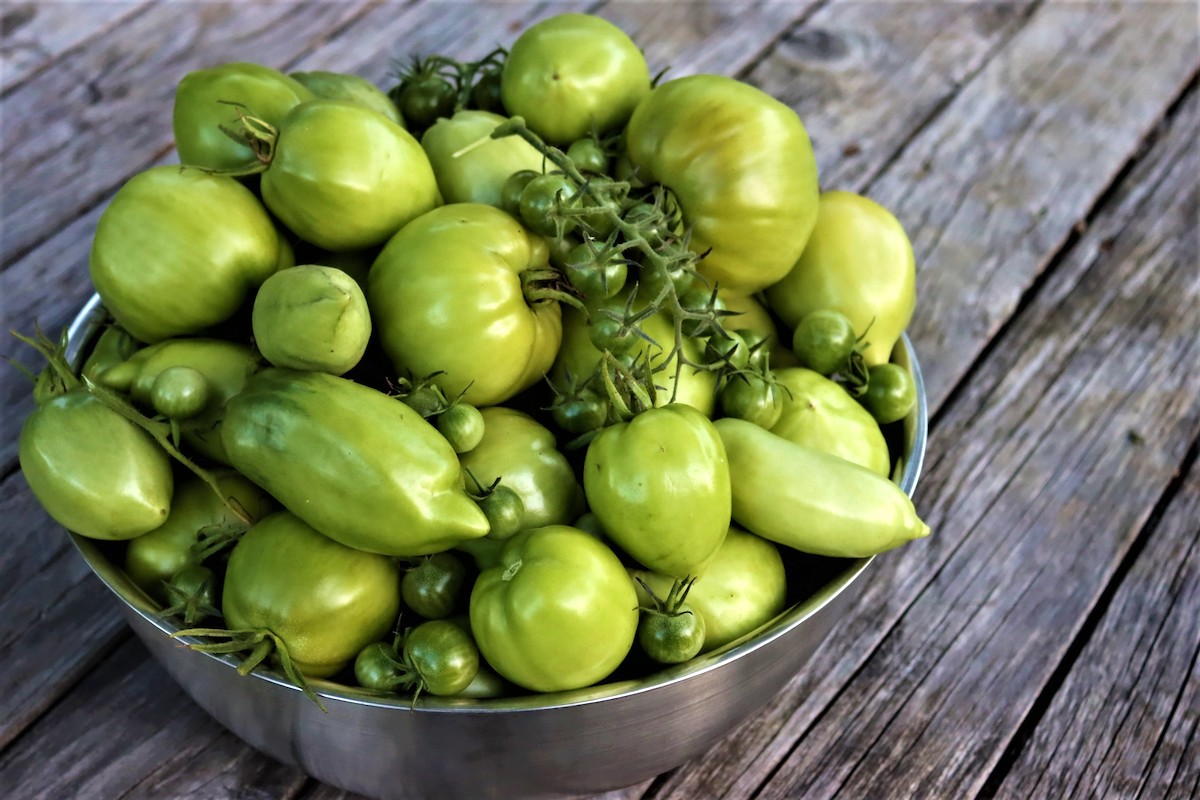

Articles
How To Store Green Tomatoes For Months
Modified: December 7, 2023
Learn the best methods for storing green tomatoes to enjoy their freshness for months. Check out our informative articles to preserve your harvest.
(Many of the links in this article redirect to a specific reviewed product. Your purchase of these products through affiliate links helps to generate commission for Storables.com, at no extra cost. Learn more)
Introduction
Green tomatoes are the unripe fruits of the tomato plant that are often left unused or discarded. However, with the right techniques, green tomatoes can be stored for months, allowing you to enjoy their unique flavor and versatility even during the off-season. Whether you have an abundance of green tomatoes from your garden or simply want to make use of the remaining ones before the frost hits, this article will guide you through various methods of storing green tomatoes to ensure their long-term preservation.
By learning how to store green tomatoes properly, you can extend their shelf life and have a supply of fresh-tasting tomatoes all year round. From selecting the best green tomatoes and preparing them for storage, to exploring different storage methods like refrigeration, freezing, canning, and dehydrating, we will cover everything you need to know in order to successfully store green tomatoes.
So if you’re ready to unlock the secrets of storing green tomatoes for months, let’s dive in and discover how to preserve their flavor and nutritional value, allowing you to enjoy the taste of summer long after it’s gone.
Key Takeaways:
- Preserve the Taste of Summer
Learn how to store green tomatoes for months using methods like refrigeration, freezing, canning, and dehydrating. Enjoy their unique flavor and versatility year-round with proper preparation and storage techniques. - Culinary Creativity Unleashed
Revive stored green tomatoes by thawing, rehydrating, canning, or experimenting with new recipes. Explore the endless possibilities of using preserved green tomatoes to add a delightful twist to your culinary creations.
Read more: How To Store Spinach For Months
Selecting Green Tomatoes for Storage
When it comes to selecting green tomatoes for storage, there are a few key factors to consider. First and foremost, choose tomatoes that are firm and free from any signs of rot or damage. Look for those that have a consistent green color and are fully mature but not yet starting to show signs of ripening.
Green tomatoes that are slightly under-ripe are ideal for storage, as they will have a longer shelf life compared to those that are already starting to turn yellow or show signs of ripening. It’s important to note that not all tomato varieties are suitable for extended storage, so be sure to select varieties known for their ability to stay firm and flavorful even when green.
If you’re growing your own tomatoes, it’s best to wait until the end of the growing season to harvest green tomatoes for storage. By this time, the plants will have stopped producing new fruits, and the remaining green tomatoes will have reached their maximum size and potential.
Alternatively, if you are purchasing green tomatoes, look for ones that are specifically labeled for storage or ask the produce vendor for recommendations. They can guide you towards varieties that are known for their ability to withstand storage conditions.
Remember, the quality of the green tomatoes you select will greatly affect their longevity in storage. So take the time to carefully choose the best specimens, and you’ll be rewarded with flavorful and preserved tomatoes for months to come.
Preparing Green Tomatoes for Storage
Before you can begin storing green tomatoes, it’s essential to properly prepare them. This preparation process helps to ensure that the tomatoes stay fresh and maintain their quality throughout their storage period. Here are a few steps to follow when preparing green tomatoes for storage:
1. Wash and dry: Start by gently washing the green tomatoes to remove any dirt or debris. Use cool water and a soft brush if necessary to clean the surface. Afterwards, pat them dry with a clean towel or allow them to air dry.
2. Remove stems and leaves: Trim off any excess stems or leaves from the green tomatoes. Leaving them attached can lead to faster spoilage and can create an environment for mold to develop.
3. Sort and inspect: Take the time to carefully sort through the green tomatoes and inspect each one for any signs of damage or decay. Remove any tomatoes that are overly soft, bruised, or showing signs of rot.
4. Label and categorize: If you’re storing different varieties of green tomatoes, consider labeling and categorizing them accordingly. This will make it easier to keep track of their storage longevity and use them in the future.
5. Consider ripening: If you have green tomatoes that are closer to turning ripe, you may decide to set them aside and allow them to ripen naturally. Keep them separate from the ones you plan to store for longer periods to avoid cross-contamination.
By following these preparation steps, you can ensure that your green tomatoes are ready for storage and will have the best chance of staying fresh and flavorful until you’re ready to use them.
Storing Green Tomatoes in a Cool and Dry Place
One of the simplest and most effective methods of storing green tomatoes is keeping them in a cool and dry place. This method works best for short-term storage, typically up to several weeks. Here’s how you can store green tomatoes in a cool and dry place:
- Choose the right location: Find a cool and well-ventilated area in your home, such as a basement, cellar, or pantry. The temperature should be around 55-70°F (13-21°C) with low humidity.
- Prepare a suitable container: Place the green tomatoes in a single layer in a basket, cardboard box, or paper bag. Make sure the container has good airflow to prevent moisture buildup.
- Monitor and inspect: Regularly check on the stored green tomatoes to ensure they haven’t started to ripen or show signs of spoilage. Remove any tomatoes that are deteriorating to prevent them from affecting the others.
- Temperature and humidity control: Maintain a consistent temperature and humidity level in the storage area. Avoid storing green tomatoes near fruits that produce ethylene gas, such as bananas and apples, as this can speed up the ripening process.
- Rotate and use them timely: To make the most of your stored green tomatoes, use the first-in, first-out (FIFO) method. This means using the ones that were stored earliest before moving on to the more recent ones.
Storing green tomatoes in a cool and dry place allows them to slowly ripen while retaining their freshness and flavor. However, it’s important to keep in mind that this method is not suitable for long-term storage. If you have a large quantity of green tomatoes or want to store them for an extended period, consider exploring other storage methods such as refrigeration or freezing.
Storing Green Tomatoes in a Refrigerator
If you want to extend the shelf life of green tomatoes, storing them in a refrigerator is a viable option. The cool temperature helps slow down the ripening process and keeps the tomatoes fresh for a longer period. Follow these steps to store green tomatoes in a refrigerator:
- Select the right tomatoes: Choose green tomatoes that are firm and free from any signs of rot or damage. Avoid storing tomatoes that are already showing signs of ripening or turning yellow.
- Clean and dry the tomatoes: Give the green tomatoes a gentle wash to remove any dirt or debris. Pat them dry with a clean towel to prevent moisture buildup.
- Wrap the tomatoes individually: Wrap each green tomato in paper towels or place them in separate paper bags. This helps absorb excess moisture and prevent the tomatoes from touching each other, reducing the risk of spoilage.
- Transfer to the refrigerator: Place the wrapped green tomatoes in the vegetable or crisper drawer of your refrigerator. This section is typically designed to maintain higher humidity levels, which can help preserve the tomatoes.
- Monitor and rotate: Regularly check the tomatoes for any signs of ripening or decay. Remove any tomatoes that are starting to ripen to ensure they don’t affect the others. Additionally, rotate the tomatoes, using the older ones first to maintain freshness.
It’s important to note that storing green tomatoes in the refrigerator can cause the texture to become mealy over time. Therefore, it’s advisable to use them within two to four weeks for the best quality and flavor.
By following these steps, you can effectively store green tomatoes in the refrigerator, ensuring that they stay fresh and ready for use whenever you need them.
To store green tomatoes for months, wrap each tomato individually in newspaper and place them in a single layer in a cardboard box. Store the box in a cool, dark place, checking regularly for ripening.
Read more: How To Store Cabbage For 6 Months
Freezing Green Tomatoes
Freezing is a popular method for long-term storage of green tomatoes. Freezing allows you to preserve the taste and texture of the tomatoes, making them a versatile ingredient even during the off-season. Here’s how you can freeze green tomatoes:
- Choose the right tomatoes: Select firm, unripe green tomatoes that are free from any signs of rot or damage. Avoid using tomatoes that are already starting to ripen.
- Wash and dry: Give the green tomatoes a gentle wash to remove any dirt or debris. Pat them dry with a clean towel to eliminate excess moisture.
- Prepare the tomatoes: Remove the stems and cores from the green tomatoes. Decide whether you want to freeze them whole, sliced, or in chunks based on your future culinary needs.
- Blanching (Optional): Blanching the green tomatoes before freezing can help preserve their color and texture. To blanch, drop the tomatoes in boiling water for a couple of minutes, then transfer them immediately to an ice bath to cool down.
- Package for freezing: Place the prepared green tomatoes in airtight freezer bags or containers. Remove as much air as possible from the packaging to prevent freezer burn. Label the containers with the date and contents for easy identification in the future.
- Freeze: Place the packaged green tomatoes in the freezer and ensure they are kept in a flat position to avoid crushing or damage. Ideally, the temperature should be set to 0°F (-18°C) or lower for optimal freezing.
- Thawing and using: To use frozen green tomatoes, simply remove the desired amount from the freezer and allow them to thaw in the refrigerator overnight or use them directly in cooked dishes without thawing.
It’s important to note that freezing can affect the texture of green tomatoes, making them softer and suitable primarily for cooked dishes. For this reason, it is recommended to use the frozen green tomatoes in recipes such as stews, sauces, and casseroles rather than eating them raw.
By following these steps, you can successfully freeze green tomatoes, enabling you to enjoy their fresh taste and vibrant color whenever you desire, regardless of the season.
Canning Green Tomatoes
Canning green tomatoes is a great way to preserve them for long-term storage while retaining their flavor and texture. Canned green tomatoes can be enjoyed in various dishes, including relishes, chutneys, and pickles. Here’s a step-by-step guide on how to can green tomatoes:
- Prepare the jars: Start by sterilizing your canning jars and lids. Place them in a pot of boiling water for a few minutes to ensure they are clean and free from any bacteria.
- Prepare the tomatoes: Wash the green tomatoes thoroughly and remove any stems or blemishes. Optionally, you can slice or chop the tomatoes, depending on how you plan to use them.
- Prepare the brine or liquid: Depending on your recipe, prepare a brine or liquid mixture that will be used to preserve the green tomatoes. This may include ingredients like vinegar, water, salt, sugar, and spices.
- Pack the jars: Fill the sterilized jars with the prepared green tomatoes, leaving some headspace at the top. Pour the brine or liquid mixture over the tomatoes, ensuring they are fully submerged.
- Seal the jars: Wipe the rims of the jars to remove any spills or debris. Place the lids on the jars and tighten the bands. Make sure the lids are secure but not overly tight to allow air to escape during the canning process.
- Process the jars: Place the filled and sealed jars in a canner or large pot with a rack. Add enough water to cover the jars, making sure there is at least an inch of water above the jars. Bring the water to a boil and process according to the recipe’s guidelines.
- Cool and store: Once the processing time is complete, carefully remove the jars from the canner using tongs or jar lifters. Place them on a towel-lined surface and allow them to cool completely. Test the seals by pressing down on the lids – they should not flex or make a clicking sound. Store the properly sealed jars in a cool, dark place.
Properly canned green tomatoes can last for up to a year or longer if stored in a cool and dry environment. Be sure to label the jars with the contents and date for easy identification.
With the canning method, you can enjoy the fresh taste of green tomatoes throughout the year and add a delightful tang to your favorite recipes.
Using Dehydrators to Store Green Tomatoes
Dehydrating green tomatoes is a fantastic way to preserve their flavor and extend their shelf life. Dehydrated green tomatoes can be used in various recipes, such as salads, sandwiches, or as a topping for pizzas and pastas. Here’s a step-by-step guide on how to use dehydrators to store green tomatoes:
- Prepare the green tomatoes: Start by washing the green tomatoes thoroughly and removing any stems or blemishes. Slice the tomatoes into thin, uniform slices for even dehydration.
- Pre-treatment (optional): Some people prefer to pre-treat the green tomato slices by blanching them in boiling water for a minute or two, followed by an ice bath to halt the cooking process. This step helps to retain color and texture, but it is not necessary.
- Arrange the tomato slices: Place the green tomato slices in a single layer on the dehydrator trays. Make sure there is enough space between the slices for proper air circulation.
- Set the temperature and time: Follow the instructions of your dehydrator to set the appropriate temperature and drying time for green tomatoes. Generally, a temperature range of 125°F to 135°F (52°C to 57°C) and a drying time of 8 to 12 hours are recommended.
- Monitor the drying process: Regularly check the progress of the green tomatoes to ensure they are drying evenly. Rotate the trays if necessary and remove any slices that have finished dehydrating to prevent over-drying.
- Test for dryness: To check if the green tomatoes are properly dehydrated, remove a slice and allow it to cool. The slice should be dry, leathery, and brittle when fully dehydrated.
- Cool and store: Once the green tomato slices are fully dehydrated, allow them to cool completely before storing them in airtight containers or resealable bags. Store them in a cool, dry place away from direct sunlight.
Dehydrated green tomatoes can be rehydrated by soaking them in warm water or adding them directly to soups, stews, or sauces. They will add a concentrated burst of flavor to your dishes, even during the off-season.
By using dehydrators to store green tomatoes, you can enjoy the unique taste and texture of this versatile vegetable throughout the year.
Reviving and Using Stored Green Tomatoes
After storing green tomatoes using various methods, such as refrigeration, freezing, canning, or dehydrating, you may be wondering how to revive and use them in your culinary creations. Here are a few ideas on how to bring life back to your stored green tomatoes:
- Thawing frozen green tomatoes: If you’ve frozen green tomatoes, simply remove them from the freezer and allow them to thaw in the refrigerator overnight. Once thawed, their texture may be softer, making them suitable for cooked dishes like stews, relishes, or tomato-based sauces.
- Rehydrating dehydrated green tomatoes: Dehydrated green tomatoes can be brought back to life by soaking them in warm water for a few minutes. Once rehydrated, use them in salads, sandwiches, or reconstitute them in soups and casseroles.
- Using canned green tomatoes: Canned green tomatoes are already cooked and ready to use. Incorporate them into recipes that call for tangy and flavorful tomatoes, such as chutneys, relishes, salsas, or as a topping for pizzas and bruschetta.
- Experiment with pickled green tomatoes: If you’ve canned green tomatoes using a pickling solution, consider using them as a zesty addition to sandwiches, burgers, or salads. The tangy and acidic nature of pickled green tomatoes can complement a range of flavors.
- Explore new recipes: Get creative with your stored green tomatoes! Experiment with green tomato jams, green tomato pie, or even green tomato salsa. The unique acidity and crunch of green tomatoes can add an exciting twist to traditional recipes.
- Pair green tomatoes with other ingredients: Green tomatoes can be paired with various ingredients to enhance their flavors. Try combining them with herbs, spices, onions, garlic, or cheese to create delicious and innovative dishes.
- Remember food safety: Regardless of the method used to store green tomatoes, always check for signs of spoilage before using them. Discard any stored tomatoes that show mold, unusual smells, or an off texture.
By reviving and incorporating stored green tomatoes into your recipes, you can enjoy their unique flavor and versatility throughout the year. Get inspired and let your culinary creativity shine by bringing these preserved green tomatoes back to your kitchen.
Read more: How To Store Roasted Tomatoes
Conclusion
Learning how to store green tomatoes effectively allows you to enjoy their fresh taste and versatility even when they are out of season. Whether you have a surplus of green tomatoes from your garden or simply want to prolong their shelf life, there are various methods you can employ to store them for months. From selecting the right green tomatoes to preparing, storing, and reviving them, each step in the process plays a crucial role in preserving their flavor and texture.
Choosing firm, unripe green tomatoes and keeping them cool and dry is an excellent option for short-term storage. Storing green tomatoes in a refrigerator can extend their shelf life, while freezing green tomatoes preserves their freshness for even longer periods. Canning green tomatoes allows you to create flavorful relishes and pickles, while dehydrating them opens up possibilities for adding intense flavor to your dishes. And when it’s time to revive your stored green tomatoes, thawing or rehydrating them brings them back to life for use in various recipes.
By employing these storage methods, you can enjoy the taste of summer year-round and make the most of your green tomato harvest. Whether you choose to cook with them, explore new recipes, or experiment with different flavor combinations, green tomatoes offer a delightful culinary adventure.
Remember to follow proper food safety guidelines, monitor for signs of spoilage, and label your stored green tomatoes to keep track of their freshness. With the right techniques, you can savor the unique flavor and versatility of green tomatoes whenever you desire, capturing the essence of the season even in the midst of winter.
So don’t let those green tomatoes go to waste! Take advantage of these storage methods and enjoy the deliciousness of green tomatoes long after the summer has passed.
Frequently Asked Questions about How To Store Green Tomatoes For Months
Was this page helpful?
At Storables.com, we guarantee accurate and reliable information. Our content, validated by Expert Board Contributors, is crafted following stringent Editorial Policies. We're committed to providing you with well-researched, expert-backed insights for all your informational needs.



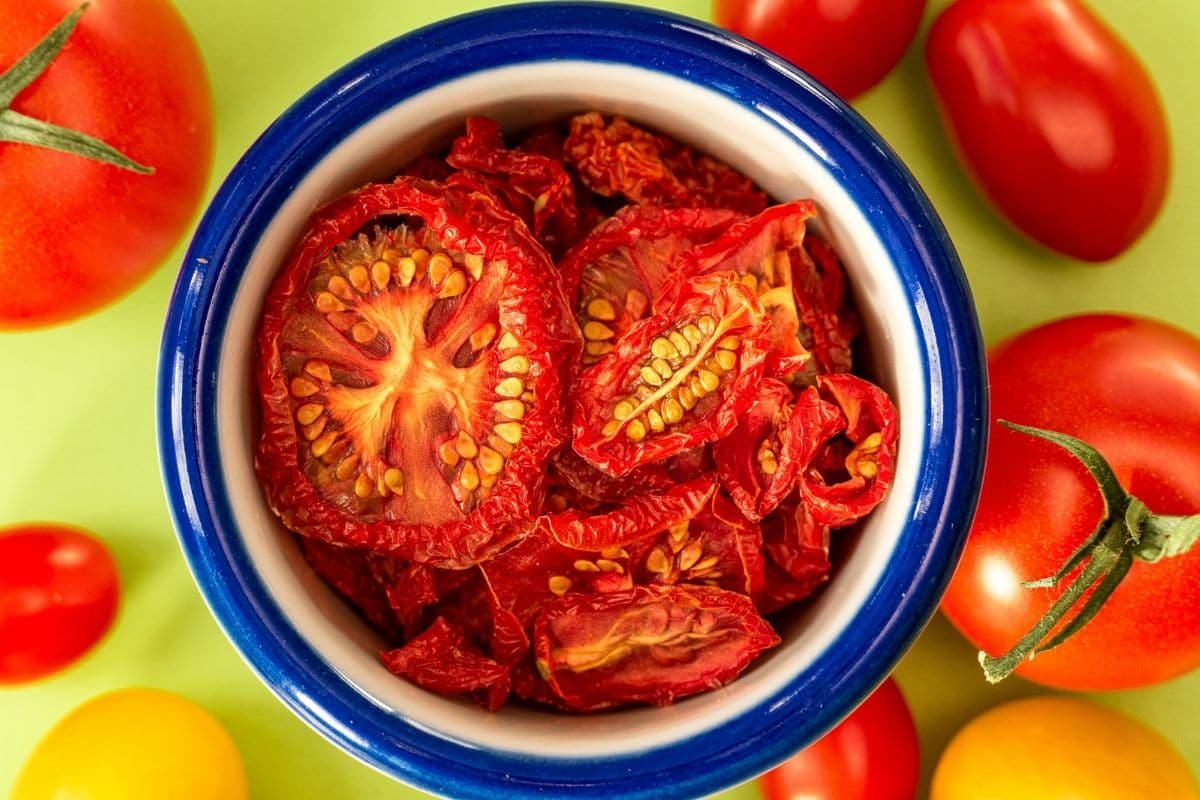
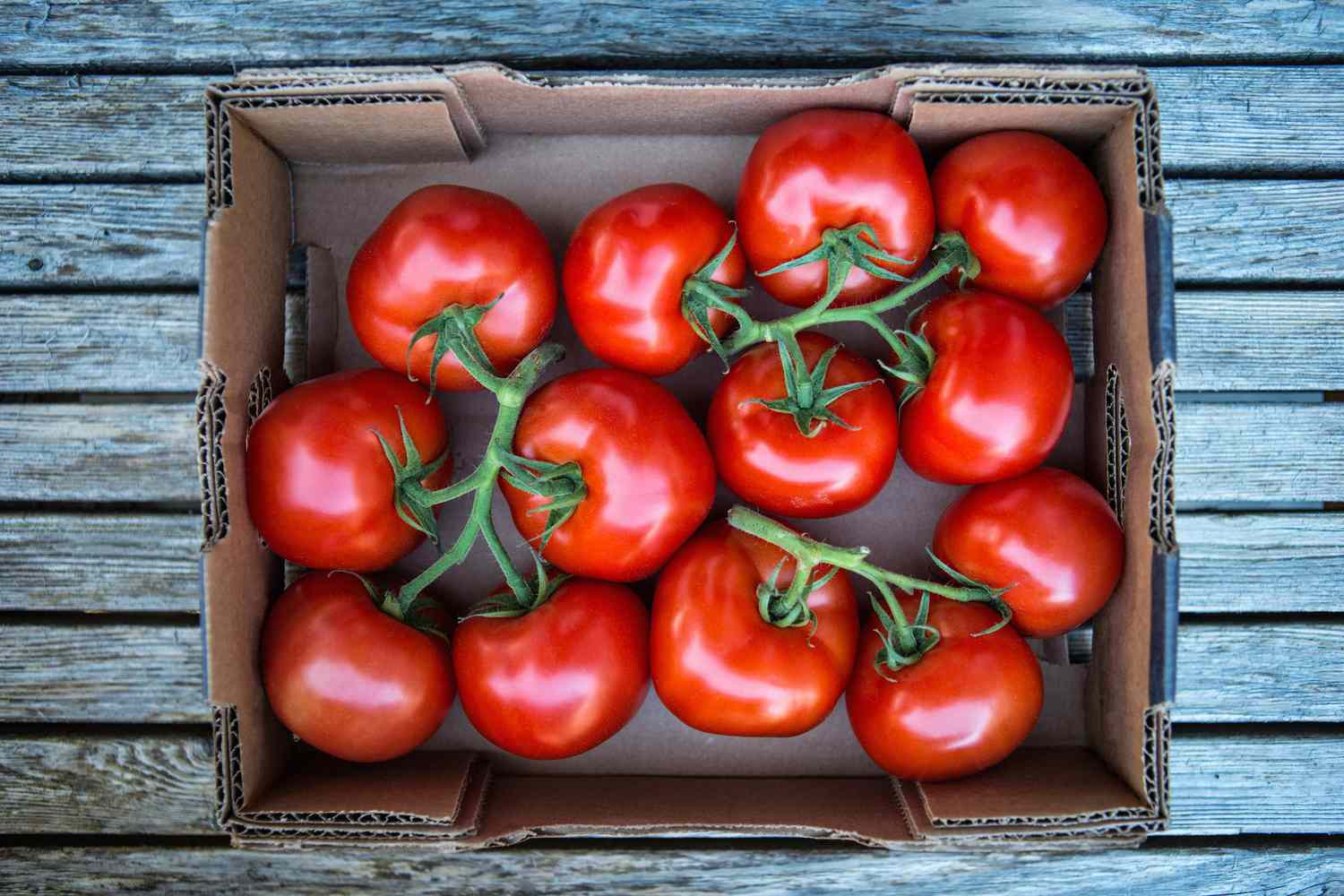
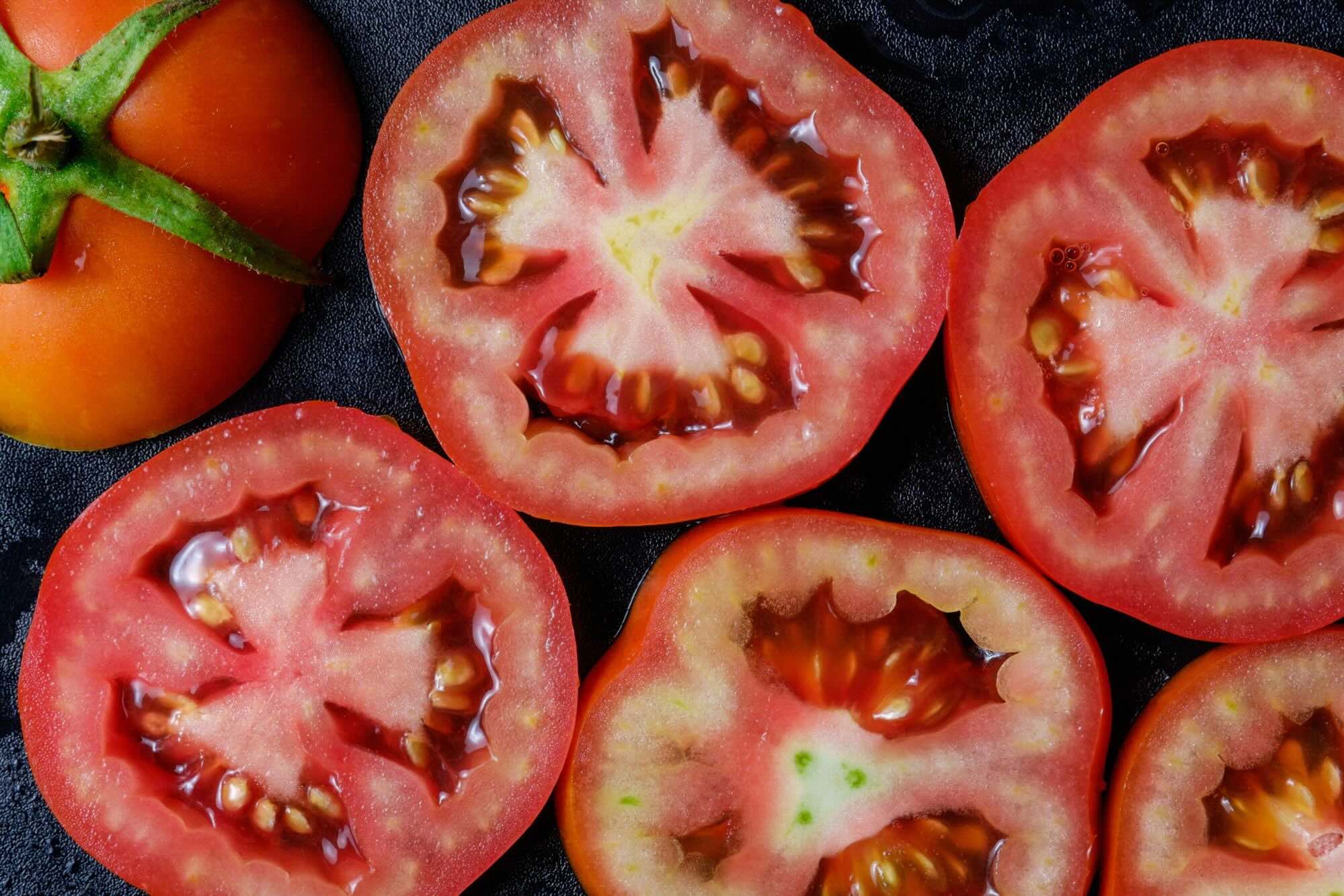
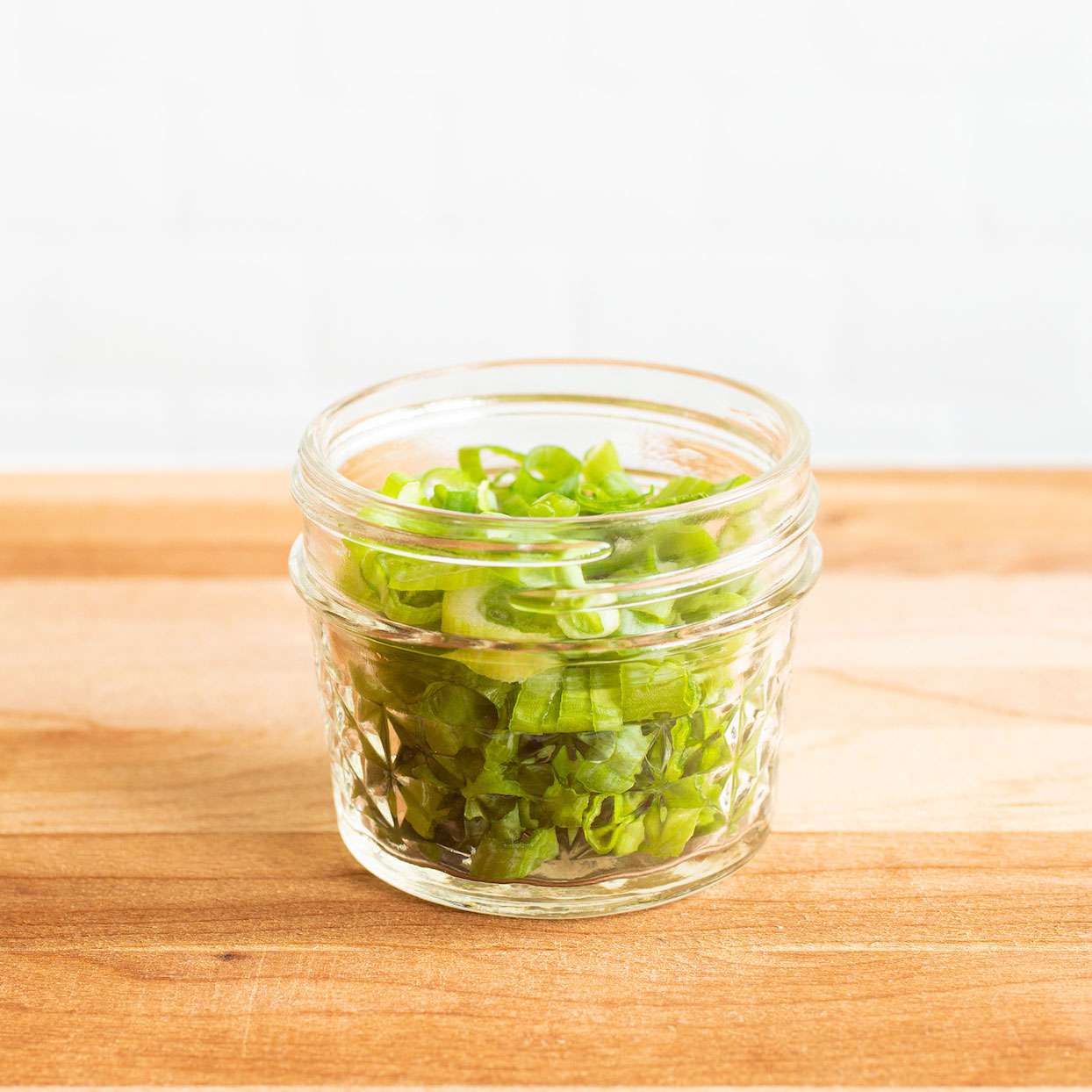


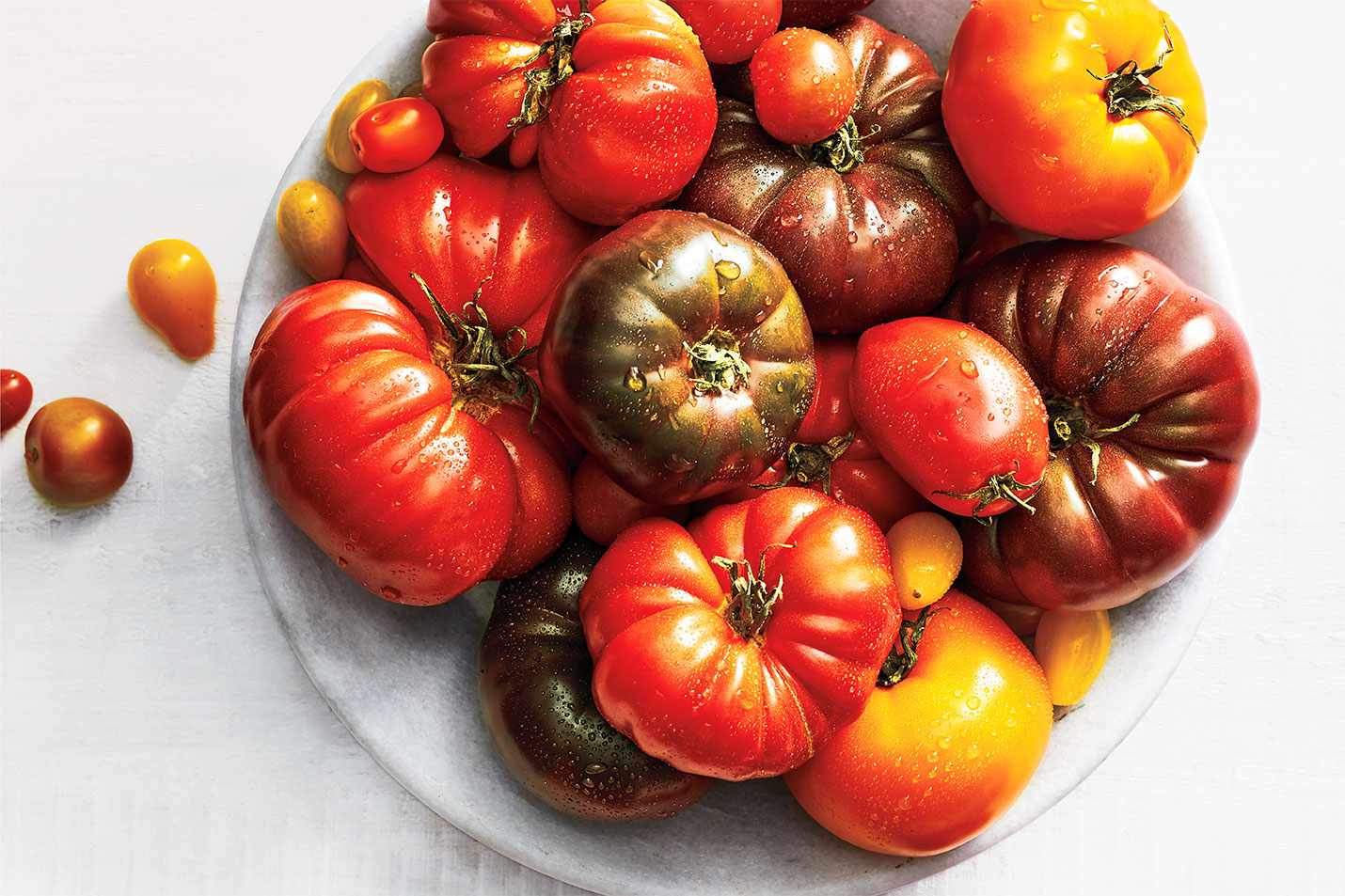
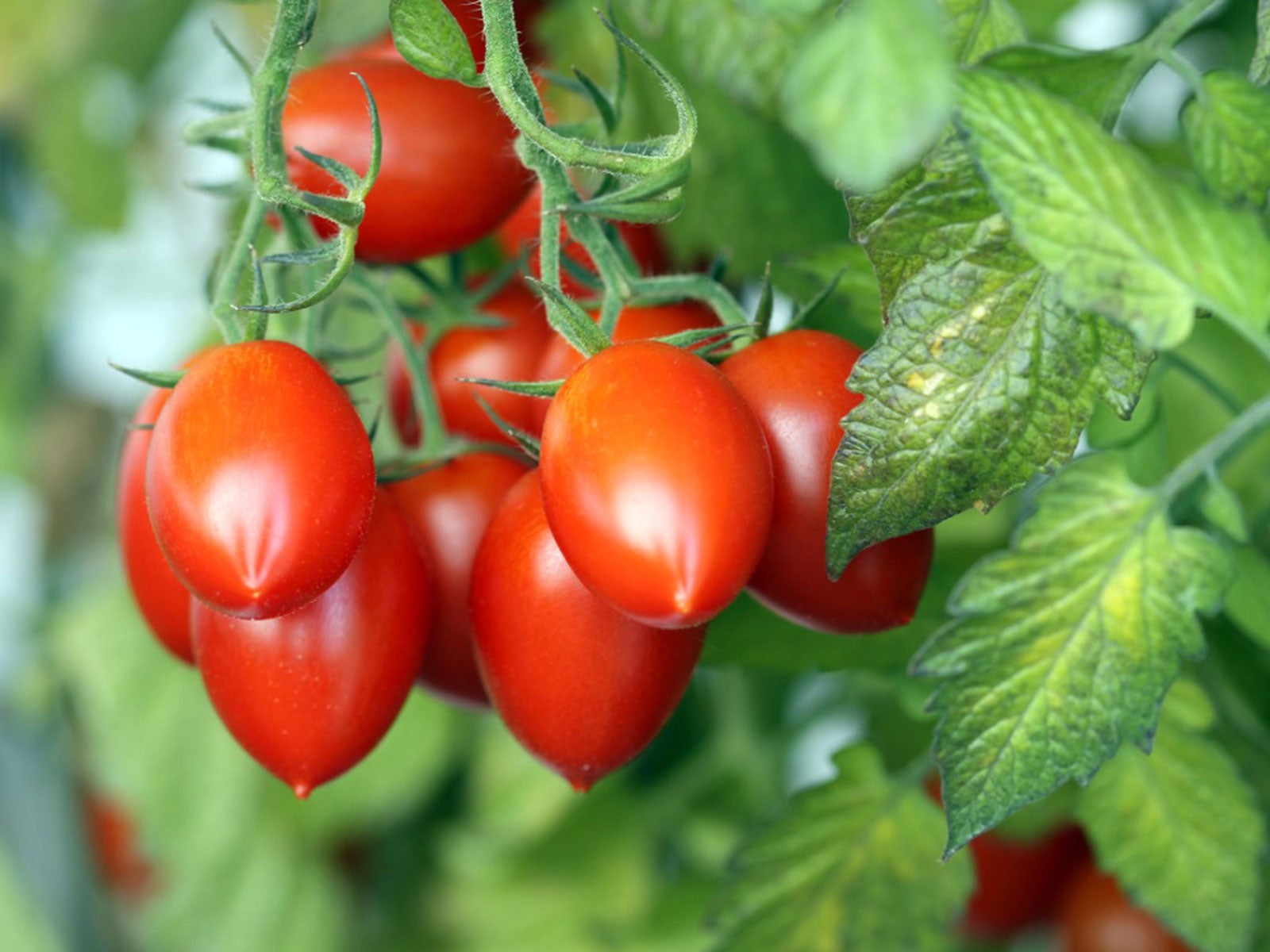



0 thoughts on “How To Store Green Tomatoes For Months”